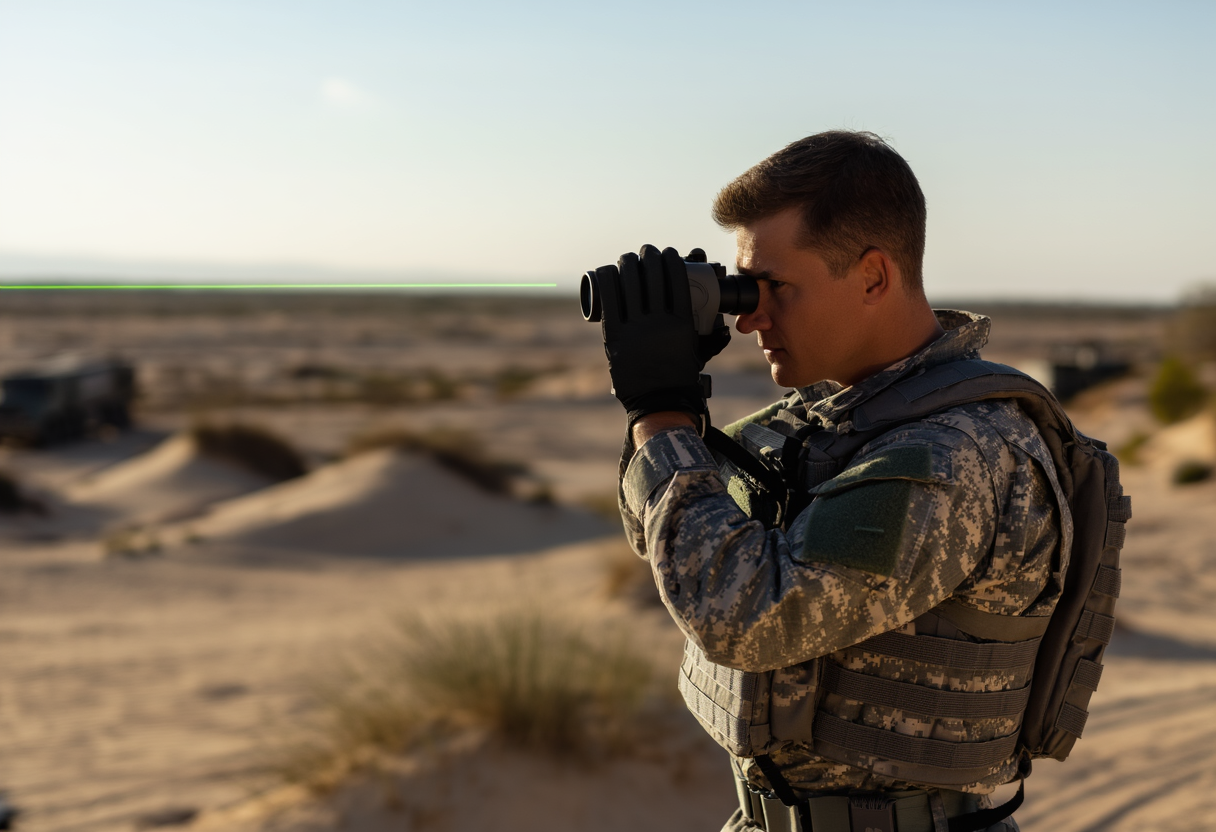Exploring the Future of Military Laser Rangefinders: Innovations and Applications
Military laser rangefinders are revolutionizing the battlefield with cutting-edge technology that enhances precision in measurement. This article delves into the innovations shaping the future of these devices, their applications across various military operations, and their impact on strategic planning. By examining emerging technologies, we highlight how military laser rangefinders are evolving to meet modern demands, ensuring efficacy and accuracy like never before.
Understanding Military Laser Rangefinders
Military laser rangefinders are essential tools in contemporary warfare. They provide accurate distance measurements that are crucial for artillery targeting, reconnaissance, and various other military operations. The advancement in laser technology has significantly improved the efficiency and response time of these devices, enabling troops to operate effectively in dynamic environments. Furthermore, military laser rangefinders are now more compact and user-friendly, allowing for streamlined use by personnel on the ground. As military strategies evolve, so too does the technology behind military laser rangefinders, incorporating user feedback to enhance functionality and reliability. Due to their critical role, understanding how these devices operate is paramount for both military strategists and manufacturers alike.
Technological Innovations Driving Military Laser Rangefinder Development
The evolution of military laser rangefinders is closely tied to technological advancements. Innovations such as improved optics, enhanced battery life, and integrated digital display systems have made these instruments indispensable. Enhanced optical systems allow for better accuracy, even in adverse weather conditions, and increased portability is a game-changer for troops in the field. Additionally, the integration of GPS technology with military laser rangefinders offers real-time data that can inform battlefield decisions. With advancements in materials and design, modern military laser rangefinders are now more durable and resilient, catering to the rigorous demands of combat. As the battlefield becomes more complex, the need for precise and reliable rangefinding technology continues to grow.
Applications of Military Laser Rangefinders in Modern Warfare
Military laser rangefinders are utilized in a myriad of applications, extending beyond traditional targeting roles. From troop positioning to land survey, these devices serve various functions that enhance military effectiveness. For instance, in forward observer units, military laser rangefinders play a critical role in coordinating strike operations. Additionally, they assist in surveillance missions, where accurate distance measurements can influence the success of intelligence-gathering efforts. By equipping air and ground forces with military laser rangefinders, militaries can streamline operations and improve overall response strategies. This versatility makes military laser rangefinders a cornerstone of modern military systems, adaptable to evolving operational needs.
The Impact of Military Laser Rangefinders on Strategic Planning
The integration of military laser rangefinders into strategic military planning cannot be understated. These devices contribute to enhanced situational awareness, enabling commanders to make informed decisions promptly. By providing explicit distance readings and terrain assessments, military laser rangefinders assist in evaluating threats and optimizing resource allocation. Furthermore, their reliability in various conditions extends the scope of operations, allowing for nighttime and low-visibility engagements. As militaries prioritize agility and precision, the role of military laser rangefinders in shaping operational strategy becomes increasingly critical. In today's military landscape, where intelligence and speed are paramount, these tools provide a significant advantage.
Challenges Facing the Military Laser Rangefinder Industry
Despite their advantages, the military laser rangefinder industry faces several challenges. One of the primary obstacles is the rapid pace of technological change, requiring manufacturers to consistently innovate to remain competitive. Additionally, there are concerns regarding the security of these devices, as advanced targeting systems can potentially fall into the wrong hands. Moreover, as military units become more integrated, the interoperability of laser rangefinders with other battlefield technologies is crucial. Balancing performance with cost-effectiveness remains an ongoing challenge for producers. Navigating these issues will be essential for ensuring that military laser rangefinders remain at the forefront of modern combat technology.
Conclusion: The Future of Military Laser Rangefinders
As we look ahead, the future of military laser rangefinders appears promising. Continued innovations and enhancements in laser technology will further solidify their standing as vital instruments for military operations. The potential integration of artificial intelligence could revolutionize their capabilities, enabling even greater precision and adaptability in diverse environments. Moreover, as global threats evolve, the demand for advanced military laser rangefinders will only increase. Their ability to provide reliable, accurate measurements makes them indispensable on the modern battlefield. Ultimately, the sustained investment in the development of military laser rangefinders will enhance military efficacy and maintain strategic superiority in an ever-changing landscape.
